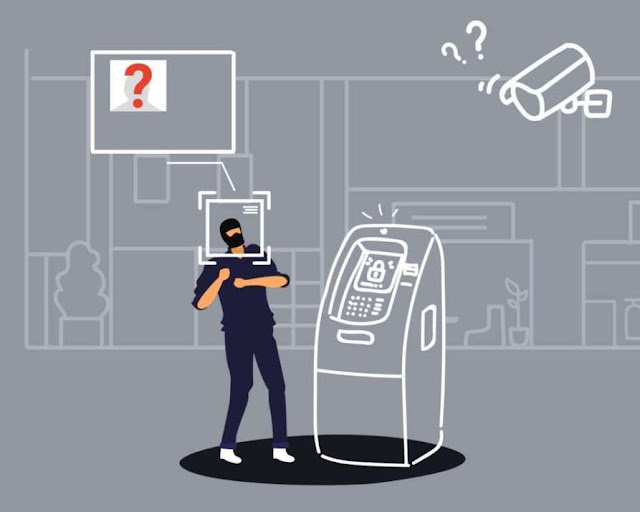Securing Financial Infrastructures: Adapting to Evolving Threats and Future Trends in Banks & ATMs
As technology continues to advance at a rapid pace, so too must our security measures. The challenges we face today are more complex and multifaceted than ever before. Our economic ecosystem revolves around Banks and ATMs as they are the primary interfaces through which customers interact with financial institutions. These physical and digital touchpoints provide essential services, from cash withdrawals to account management, facilitating the flow of funds and enabling economic transactions. For the same reason, they have always been a prime target for a myriad of threats, from traditional heists and robberies to sophisticated cyberattacks and data breaches. Addressing these threats requires not just reactive measures but a proactive, holistic approach that anticipates and mitigates risks at every turn.
Enhancing Physical Security:
Protecting banks and ATMs from physical threats requires implementing a multi-layered security approach. Surveillance cameras, alarms, and secure locks are essential components of physical security systems, providing real-time monitoring and deterrence against criminal activities such as robberies and vandalism. Regular security audits and risk assessments help identify vulnerabilities and weaknesses in security protocols, enabling banks to take proactive measures to address potential threats.
Additionally, access control measures, such as biometric authentication and role-based access systems, restrict entry to authorized personnel only, reducing the risk of unauthorized access to sensitive areas within bank premises. Furthermore, the use of bulletproof glass and other physical barriers can protect bank staff and customers from violent crimes, adding an extra layer of security to bank branches and ATMs.
Cybersecurity Measures:
In today's digital age, cybersecurity is paramount to protect against cyber threats such as data breaches, hacking attempts, and malware attacks. Banks must employ advanced cybersecurity solutions to safeguard customer data and financial transactions conducted online and through ATMs. Encryption protocols ensure the confidentiality and integrity of sensitive information, while multi-factor authentication methods add an extra layer of security to user accounts.
Moreover, compliance with industry regulations such as PCI DSS, GDPR, and FFIEC is crucial to ensure that banks adhere to best practices in data protection and privacy. Regular security assessments and penetration testing help identify vulnerabilities in software and systems, enabling banks to patch and update their defenses against evolving cyber threats.
Customer Education:
Empowering customers with knowledge about cybersecurity best practices is essential in combating cyber threats and minimizing risks associated with fraud and identity theft. Banks should provide educational resources and training programs to raise awareness about common scams and fraud schemes, as well as practical tips for protecting personal information and financial assets.
Encouraging customers to use secure banking channels and report any suspicious activities promptly can help prevent financial losses and mitigate the impact of cyberattacks. Additionally, offering support and assistance to customers who have fallen victim to fraud or cybercrime can help restore trust and confidence in banking services.
Trends in Bank and ATM Security:
The landscape of bank and ATM security is constantly evolving, driven by technological advancements and emerging threats. Biometric authentication methods, such as fingerprint scanners and facial recognition technology, offer enhanced security and convenience for customers, reducing the reliance on traditional authentication methods such as PINs and passwords.
Artificial Intelligence (AI) and machine learning algorithms are increasingly being used to detect and respond to security threats in real time, enabling banks to identify suspicious activities and take proactive measures to mitigate risks. Contactless ATMs and mobile banking apps offer faster and more convenient ways for customers to access their funds, while smart branches leverage digital technologies to enhance customer service and streamline operations.
Adapting to Evolving Threats:
To stay ahead of emerging threats, banks must continuously evaluate and update their security strategies and technologies. Integrated security systems that leverage advanced technologies such as video analytics, biometrics, and IoT sensors enable real-time monitoring and analysis of security incidents across multiple branches and ATMs.
Centralized management platforms and automation tools streamline security operations and improve response times, allowing banks to effectively mitigate risks and protect their assets. Furthermore, collaboration and information sharing among financial institutions and law enforcement agencies play a crucial role in combating cybercrime and fraud, enabling faster detection and response to security incidents.
Future Trends:
Looking ahead, the future of bank branches and ATM security will be characterized by further advancements in technology and innovative approaches to risk management. Biometric authentication methods will continue to evolve, offering enhanced security and user experience. Contactless payment technologies and mobile wallets will become more prevalent, enabling faster and more secure transactions.
Artificial Intelligence (AI) and machine learning algorithms will play an increasingly important role in detecting and responding to security threats, enabling banks to stay ahead of cybercriminals and protect their customers' assets. Cloud-based security solutions will provide banks with greater flexibility and scalability, allowing them to adapt to changing security needs and emerging threats.
Conclusion:
Safeguarding banks and ATMs against evolving threats requires a proactive and multi-faceted approach that encompasses physical security enhancements, advanced cybersecurity measures, and proactive customer education initiatives. By leveraging E-surveillance technology along with integrated ATM security systems, banks can effectively mitigate risks and ensure the safety and security of their financial infrastructure, protecting both their customers and their assets.



Comments
Post a Comment